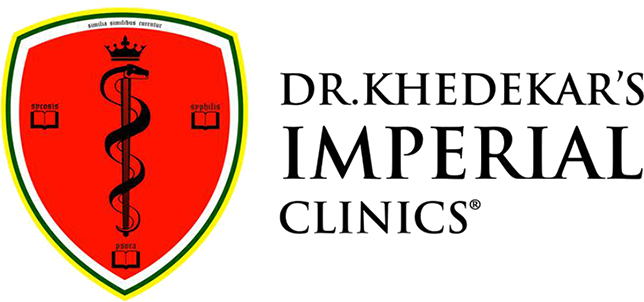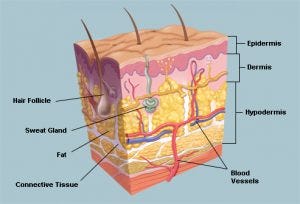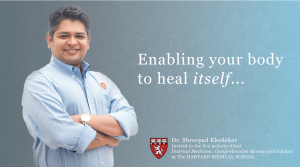ECZEMA IS AUTOIMMUNE AND STEROIDS WON’T WORK!
ECZEMA IS AUTOIMMUNE AND STEROIDS WON’T WORK!


The skin is the body’s largest organ; an average person’s skin weighs 4kgs (9lbs) and covers an area of 2 square metres (22 sq feet). These figures are not so surprising when we enumerate the skin’s many functions. Some are fairly obvious: protection against chemicals, radiation, microbes etc; preserving a balanced internal environment by keeping us warm, preventing us from drying out; and the sensation of touch in all its variety. But the skin has less obvious functions: subcutaneous fat is a major reserve of energy, vitamin D is synthesised in the skin when exposed to ultra-violet light. The skin also has important social and sexual functions: it secretes pheromones which play an important role in sexual attraction, while the hair and lips play a more conscious social and sexual role.
The skin has two main parts: the superficial epidermis whose thickness ranges from 0.1mm on the eyelids to 1mm on the soles of the feet. The epidermis contains no blood vessels, its most superficial layer is the dead, dry horny layer which is constantly shed, contributing to the dust in our homes. The dermis lies beneath the epidermis supporting and nourishing it and providing immunity and other functions.
What’s more, skin problems are common: surveys suggest that 20–30 per cent of us have a skin problem which deserves medical attention, but that most of us do not see doctors about them, preferring to treat them ourselves. Skin problems are among the commonest reasons for which people, especially children, seek homeopathic treatment. Of course, as always with homeopathy, it is important to be sure that homeopathic treatment is appropriate — it is for many forms of skin disease, but there are important exceptions. The most conspicuous is malignant melanoma. This is an aggressive form of skin cancer whose incidence is increasing (although fortunately it remains rare) because of greater sun exposure and thinning of the ozone layer. The warning signs are a “mole”, which grows, bleeds or is irregular in shape or colour. It is better to be safe than sorry, and have any such skin lesion removed surgically.
Dr. Shreepad Khedekar’s interview on National TV (Marathi)
Homeopathy treatment for Eczema and Eczema homeopathic medicine
Also known as dermatitis, eczema is among the commonest forms of skin disease, and it often responds well to homeopathic treatment. It affects up to 20 per cent of schoolchildren and seven to eight percent of adults. Children tend to grow out of it and the majority improve greatly by their mid-teens. It is an inflammatory condition in which patches of skin become red, inflamed and itchy. The affected areas may also be covered in small, fluid-filled blisters. There are a number of different forms of eczema.
The commonest form is atopic eczema, an inborn condition which usually starts before the age of two, and may continue to flare up throughout adolescence and adulthood. “Atopy” means an inherited tendency to allergies, including eczema, asthma and hay fever. It runs in families and is getting commoner for reasons that are not entirely clear. A currently popular theory, known as the “hygiene hypothesis” suggests the reason is basically that kids today are too clean (try telling that to the mother of an average eight year-old boy!). It is based on the observation that children who grow up on farms and the younger children of large families are less likely to be atopic. The theory is that such children are more likely to be exposed to certain kinds of bacteria and that this stimulates their immune systems to mature. But not all the scientific evidence agrees on this and the jury is still out.
Contact dermatitis is caused by contact with a substance to which an individual is sensitive, such as nickel, rubber or various plants. It can occur at any age. Nickel is one of the commonest skin sensitisers — it can usually be spotted by the areas it affects: earrings and jean buttons often contain nickel.
Seborrhoeic dermatitis occurs in adult and infantile forms. In babies it is often known as cradle cap because it affects the scalp, although it may also affect the nappy area. The adult form usually affects the face and scalp.
Finally varicose eczema occurs mostly in older people, as the name suggests it is often linked to varicose veins: the blood stagnates in the lower legs resulting in a poor supply of oxygen and nutrients. The skin becomes dark, itchy and inflamed. If left untreated the skin may break down, forming an ulcer.

HOW IS ECZEMA TREATED BY CLASSICAL HOMEOPATHS? THESE ARE THE 7 GOLDEN STEPS THAT EXPERTS FOLLOW:
- Identify cause (genetic or acquired).
2. Individualise Constitution of patient: Mental and Physical make-up.
3. Identify triggers (emotions, chemicals, foods, drugs, life situations, etc). See what has actually triggered the eczema in every individual case.
4. Understand what the patient actually does during the bout of eczema. Its very interesting how different people react to the same pathological condition. Some complain, some tolerate, some quarrel, some want to be left alone, some want to be in contact with loved ones, some rush to the doctor, some become aggressive, etc. These reactions are the most important for a doctor to understand before he analyses and repertorises. Most patients have a physical path of least resistance during bouts of eczema. Some develop cracks on skin, some develop giddiness and weakness, some react with non-healing ulcers, etc.
5. Explain the simple ‘to do’ things to the patient.
6. Repertorise and Prescribe.
7. Bring the disease to lower forms and cure by lysis and not by crisis to eventually CURE it from the roots.
FOR PATIENTS WITH ECZEMA:
Do check your stress-score and see if you really need medical help or not? Click on the link below for a FREE evaluation. STRESS CALCULATOR All you’ll need to do is a quick sign-up and select your age group. Once you’ve done that, you’ll need to select events that have happened to you in your life time and you’ll know if you need medication for your ‘Hair loss’ or not. Its that simple. The app is also available as a paid download on Google Playstore and can be used for your entire family unlimited times. Download here.
A trigger event. Many people experience eczema several months after a physical or emotional shock. This type of eczema is temporary. Examples of trigger events include sudden or excessive weight loss, a high fever, demotion, financial stress, surgery, or a death in the family.
Screenshot of the software application.
WHAT HOMEOPATHY COSTS?
Your first consultation with a private homeopath will usually cost between INR 500 to INR 10,000. Further appointments usually cost less — about INR 500 to INR 5000 depending on the location of the place and experience of homeopath. It will also depend on the skill level of his staff or assistants who usually take the first case and prepare it for the main consultant.
Your remedy will usually be included in the consultation price, but do check this first. Homeopathic tablets or other products usually cost around INR 100 to INR500 if you need to buy them separately in India.

Imperial clinics Mumbai
Dr. Shreepad A. Khedekar, BHMS, MD (homeopathy), a specialist for over 17 years, he has used homeopathy in his Switzerland, Belgrade and Mumbai practice for the last 17 years. He lectures in homeopathy at Switzerland, Croatia and at the Serbian Doctors Association (SLD) Teaching Centre in Belgrade and has a busy private practice in Dadar, Mumbai and at Shushrusha Citizens co-operative hospital, Mumbai and is the only Homeopath in their 60 year history.
Dr. Shreepad Khedekar is the Clinical Director, Imperial clinics Mumbai and Imperial clinics Belgrade, Consultant at Shushrusha Citizens Co-op Hospital Mumbai and Physician to several international stars and celebrities.
For More Details eczema homeopathic medicine visit here.
Leave a Reply